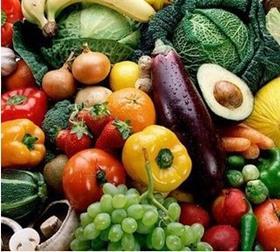
Sales of organic fruits and salads dropped in 2013, although the organic vegetable market saw strong growth.
Fruits and salads saw a 1.2 per cent and 4.7 per cent drop in year-on-year sales respectively, according to the Soil Association’s Organic Market Report, but vegetables posted a 3.4 per cent rise on 2012 figures.
As a category, organic sales were up by 2.8 per cent, the first time the organics market – now valued at £1.79 billion - has seen annual growth since 2008. Organic sales topped overall grocery sales the UK in 2013, which were up by 2.1 per cent.
Rob Sexton, CEO of Soil Association Certification, said: “To see the organic market showing such strong signs of growth, particularly when grocery sales as a whole are slowing, shows just how much potential there is in the organic sector.
“Both the growth in the organic market and the accelerating growth of products carrying the Soil Association logo (up more than 5 per cent in 2013) further highlight the growing public demand for organic and food logos that they can trust.
“The message to supermarkets and other retailers and organic businesses is clear: if you make organic goods available and promote them well, consumers will respond by continuing to purchase the products they have confidence in.”
Independent stores led the way for organic sales last year, witnessing growth of just under 7 per cent to almost £10 million per week.
Online sales of organic continue to grow strongly, with Ocado seeing an increase in sales of 10.4 per cent.
Supermarkets have seen some growth in the past year too, with overall sales up 1.2 per cent. Sainsbury’s, the country’s biggest organic retailer with 29 per cent market share, saw a 7 per cent increase in sales of its own-label organic products, closely followed by Waitrose, which saw its organic sales increase by 6.5 per cent.
Also witnessing growth throughout 2013 are mail-order, home-delivery and veg box schemes – up 11 per cent on last year, with leading brands Abel & Cole and Riverford seeing a combined increase in sales of 17.9 per cent.
Four out of five households now buy organic produce, with Soil Association research showing that shoppers under 34 state that they are more willing to spend the most on organic products.
Sexton added: “Research has shown that organic shoppers expect to buy more organic products this year than last, so we have reason to be positive about the outlook for organic in 2014 and beyond. Now, the priority needs to be ensuring a greater choice of organic produce on shelves.”
However, despite the continued demand from UK consumers, figures from Defra report that producer numbers and the UK’s organic land area decreased in the year to December 2012 (the latest figures available).
The numbers of organic producers and processors fell by 6.3 per cent to 6,487, while just 3.5 per cent (606,000 hectares) of the agricultural land area in the UK is organic.
Sexton said: “2013 has seen a decline in the amount of agricultural land in the UK that is organic, and we know that many farmers are concerned about the profitability of organic.
“We have strong evidence to show that organic farming systems are at least as profitable as non-organic, and we know that demand for organic is increasing amongst consumers.
“A serious injection of producer confidence is needed, in the shape of increased commitment from retailers and policy makers to help support existing organic farmers and grow the market in future, ensuring organic supply can meet increasing consumer demand.”
| Leading markets for organic food worldwide (FiBL/AMI/Organic Data Network 2014) | % of global sales |
| USA | 44 |
| Germany | 14 |
| France | 8 |
| Canada | 4 |
| Italy | 4 |
| UK | 4 |
| Switzerland | 3 |



